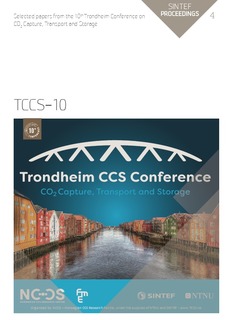Storage Resources for Future European CCS Deployment; A Roadmap for a Horda CO2 Storage Hub, Offshore Norway
Chapter, Conference object, Peer reviewed
Published version
Permanent lenke
http://hdl.handle.net/11250/2637934Utgivelsesdato
2019Metadata
Vis full innførselSamlinger
- SINTEF Industri [1571]
- SINTEF Proceedings [402]
Sammendrag
Deployment of Carbon Capture and Storage (CCS) at large scale will be necessary to be able to fulfil the goal from the Paris Agreement to keep the global mean temperature in year 2100 well below two degrees Celsius above preindustrial levels. Consequently, it is anticipated that there will be a significant increase in demand for CO2 storage capacity. Offshore areas, such as the North Sea part of the Norwegian Continental Shelf, are prime candidates to provide this storage capacity. Given that the development of a storage site can take five years or more, it is of major importance to start the planning of expandable storage hubs. Anticipating and planning of additional stores will give industry clusters and power producers confidence that there will be sufficient operative storage capacity available for the expected increasing supply of captured CO2. In this study, which is part of the ALIGN-CCUS project, we outline how an expansion in annual storage capacity of a CO2 storage hub offshore the west coast of Norway can be achieved. Simulation of CO2 storage and capacity estimates show that the Horda Platform study area has at least four potential storage sites with capacities in million tonnes (Mt) or thousand million tonnes (Gt) CO2 as follows: 1) Aurora structure, in the Johansen Formation, south-east of the Troll Gas Field (120–293 Mt); 2) Alpha structure, in the Sognefjord Formation, northern Smeaheia area (40–50 Mt); 3) Gamma structure, in the Sognefjord Formation, southern Smeaheia area (0.15–3 Gt) and 4) Troll Field, Sognefjord Formation, after cessation of gas production (3–5 Gt). We sketch a timeline for which possible sites could be used for the development of the industrial-scale Horda CO2 Storage Hub over the next thirty years. The annual storage capacity is matched to the estimated CO2 supply rates (million tonnes per year) from sources in Norway, Sweden and Northern Europe. These estimates indicate cumulative totals of CO2 stored in range of 810 Mt by 2050, and 1.85 Gt by 2065.

